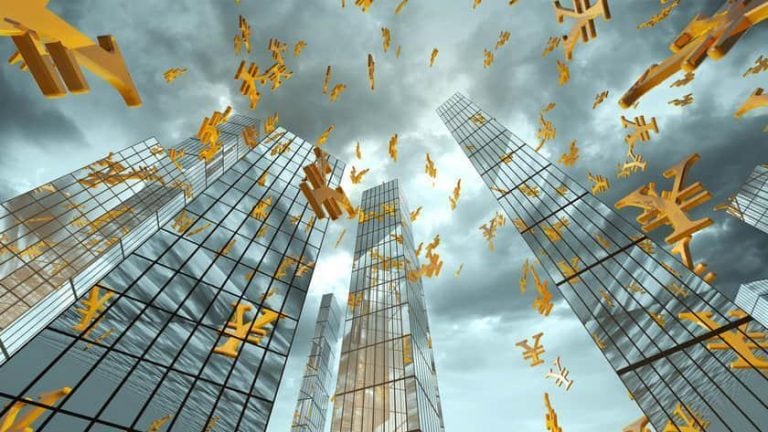
Many Japanese people have fond memories of the late 80’s. Miyazaki’s My Neighbor Totoro and Nausicaä of the Valley of the Wind had just been released. The Famicon was becoming huge international phenomenon. The sweet sound of City Pop filled the air. These were the true glory days of the Japan economy.
But how did Japan achieve financial success in the late eighties? And what went wrong? Let’s look at the key points of Japan’s bubble economy and what it means today.
What was Japan’s Bubble Economy?
The bubble economy refers to the changes in economy in Japan from the late 1980’s to the early 1990’s. The bubble economy can be defined by three main factors:
1 – A sharp rise in asset prices
Asset prices (the cost of land, capital, houses, financial assets, ect) had slowly increased in Japan from 1983, but quickly accelerated in 1986. The most significant increases were stock prices and land. The Urban Land Price index almost quadrupled from 1985 to 1990. The cost of land began to increase in Tokyo, and then soon spread across other large cities, including Osaka, Nagoya, Kyoto, Yokohama and Kobe. Commercial, residential, and industrial land prices all increased nationwide, until reaching a peak in 1990. It is considered that this increase in land prices also led to the increases in stock prices.
The most important reason for the asset price increase is thought to be the Plaza Accord, which doubled the exchange rate value of the US dollar versus the yen between 1985 and 1987.
2 – Overheating economic activity
The economy expanded over four years, from 1986 to 1991. This expansion was driven by business fixed investment, a rapid increase of housing investment and more expenditure on household consumables.
3- A large increase in money supply and credit
At the end of the ‘endaka recession’, the money supply decreased in 1986. However, the growth of money supply and credit accelerated and exceeded 10% from April to June in 1987.
Banks increased their borrowing activity. In fact, the BOJ (Bank of Japan) allowed excessive loan growth quotas. There was also a rise in financing from capital markets due to financial deregulation and the increase of stock prices. This resulted in more funding for the corporate and household sectors.
However, in 1990 the BOJ tightened its monetary policy and bank lending began to drop.

Why did the Japanese economy bubble burst?
In attempt to manage the inflation rate, the BOJ increased their inter-bank lending rates in 1989. The dramatic policy change led to the bubble bursting and the Japan stock market came crashing down.
The asset prices fell and left the banks and financial institutions in huge amounts of debt. Although insolvent, these banks managed stay active through support from the government. They received capital infusions from the government as well as loans from the central bank, thus creating ‘zombie banks’ (banks that are operational even though they have no economic net worth). Unfortunately, these ‘zombie banks’ were also funding ‘zombie firms’ (unprofitable businesses). Inevitably, these firms proved to be unsustainable.
The Lost Decade(s)
The ‘Lost Decade’ originally referred to the decade after the bubble burst (from 1991 to 2001). During this time, the Japanese economy grew by only 1.14% GDP, significantly lower than other nations. Equity values dropped 60% from 1989 to 1992, and land values fell 70% by 2001.
However, because of the ongoing state of slow growth, some economists will talk about the ‘Lost Decades’ or ‘Lost Years’ to include data up to today.
Why hasn’t Japan recovered from the Lost Decades?
There is much debate about the reasons behind this continual slow growth. Many believe, including economists such as Paul Krugman, that Japan is caught in a liquidity trap. This means that a standard monetary policy is not enough to regain Japan’s economic health.
Others argue that larger structural issues has caused the long-run recession in Japan. For example, the aging population can curb growth. Also, Japan’s banks are now very reluctant to lend money, which has impeded business investment and technological innovation.
After his election win in 2012, Shinzo Abe introduced his ‘Abenomics’ plan to reform the drop in the economy. His three-pronged approach used a combination of reflation, government spending and a growth strategy to help the economy recover. However, the consumption tax hike in 2014 from 5% to 8% is thought to have induced the 2014 recession. This, combined with little-to-no increase in wages, left consumers discouraged from spending.
Japan’s economy today
In 2021, Japan had dramatically more public debt than any other developed nation, at 266% of GDP. 45% of this debt is held by the BOJ.
Additionally, like many other countries, Japan’s economy took a hard hit due to the pandemic. Economic growth has fluctuated wildly with every new variation of the virus. Japan’s GDP is currently 2.9% below what it was pre-pandemic, which is lower than most developed economies.
Global pandemics. War in Russia. Low birth rates. All these factors and more means it is difficult to predict the future health of Japan’s economy. But let’s hope one day it can rise to those sweet City Pop glory days again.




















